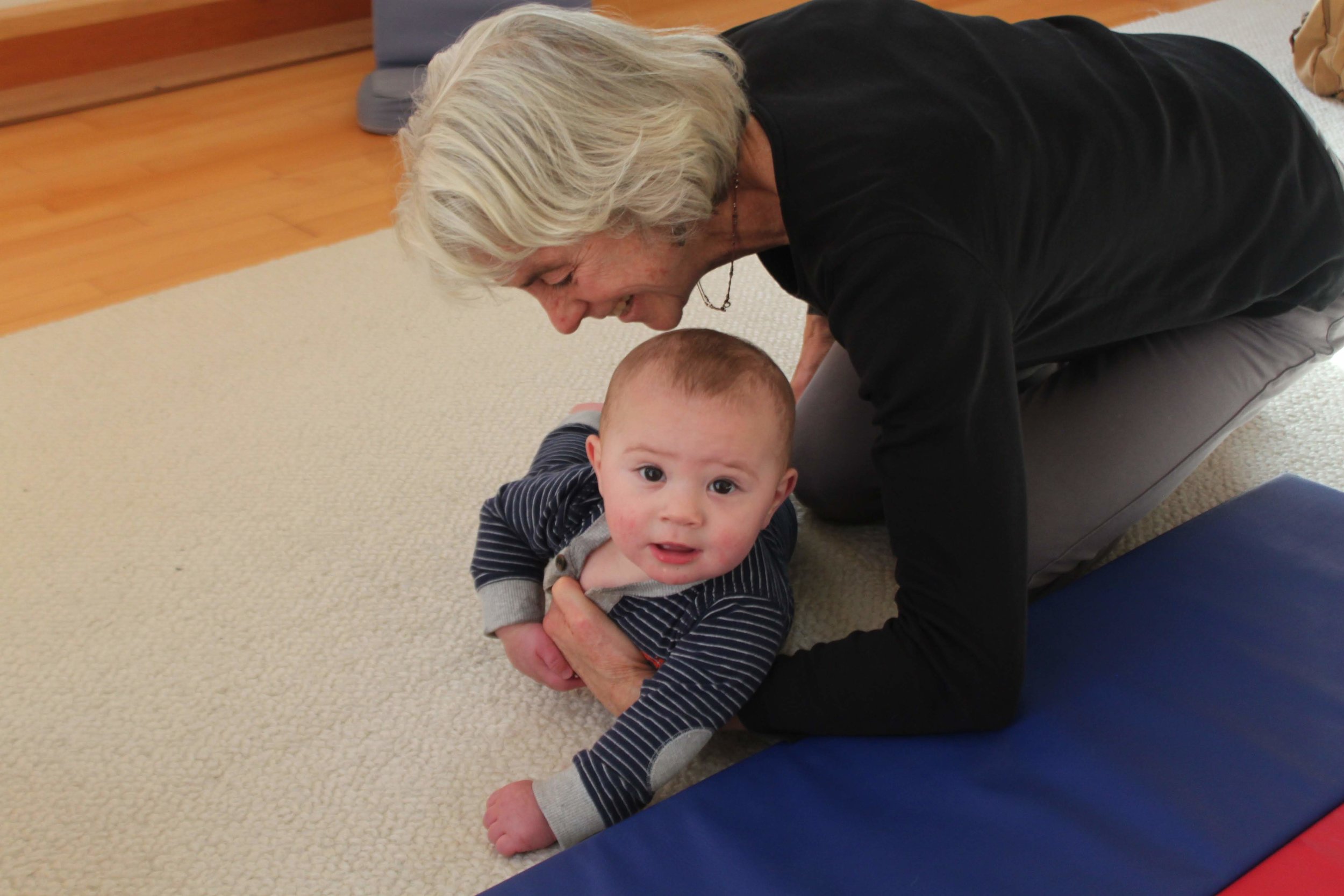Babies typically come into the world with an array of movements that are programmed into their nervous systems in the form of reflexes, righting reactions and equilibrium responses. They don’t have to learn these movements. They just get to use them as a foundation for all of the movements they learn during the first years of life. We parents get excited as we watch them progressing along this movement journey, ticking off each milestone, looking forward to the next, and feeling a surge of pride when they are finally up and walking!
Here’s what might be kind of a new idea: slow it all down. Encourage your baby to take her time getting to vertical. The more time that she spends on the floor, the more time she has to practice the combinations of movements that build the strength, balance and coordination she needs once she’s “up and running.”
This is what you can watch for (and sometimes assist!) as she winds her way along the path to uprightness: First she’ll spend lots of time wriggling around on her belly and back. On her belly, she’ll start lifting up her head so that her neck gets stronger. Then she’ll roll over. As she starts to feel more comfortable on her tummy she’ll push into her arms to raise her head and chest off the floor. Around this time, she’ll also be figuring out how to shift her weight from one side to the other, how to pivot around, and how to lift her legs and arms up together like an airplane.
This will all lead to belly crawling – a super important time for developing trunk strength, for learning to coordinate arm and leg movements, and for getting the joints in the ankles, hips, and back ready for weight-bearing. She’ll also enjoy lying on her side, leaning on her forearm, and eventually pushing herself up into sitting. As she figures out how to lower herself back down, she’ll be working on the skills that lead her to crawling on all fours, to pulling herself up to standing, and to cruising along furniture.
If you watch her hands and feet during this whole process, you’ll see lots of pushing and reaching, one part of her body bending while another extends. It’s fun to see just what she has to do to produce the movements that take her forwards, backwards, upwards, downwards and sideways. You can help her, but try not to do the movements for her. If she does them herself, her brain will create the necessary pathways.
A great rule of thumb is that if she’s gotten “there” (sitting, standing, walking) on her own, she’s much more likely to have the strength and coordination to feel secure and stable. When she’s placed or propped in positions she’s not ready for she’ll have to tense her body in order to hold or maintain the position. That kind of muscle tightness tends to interfere with easy, comfortable and efficient movement.
